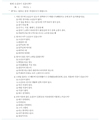Abstract
For the prevention and treatment of the disease, a variety of plants and materials from plants have been used throughout history in the countries over the world. People have a preconceived idea that the medicinal herb is a panacea with a wide safety margin. It seems to be generous to apply traditional medicine to treat patients in most countries, because it has been used for a long time. However, some serious circumstances have been reported after using herbs. Chinese herb nephropathy is well-known toxicity of the medicinal herb. Of course, it is not easy to clarify the causal relation between the herbs and side effect of them. There also has been many problems using medicinal herbs in Korea. Even though the most important thing is the toxicity of the medicinal herbs, only sporadic cases have been reported. No significant cumulative data have been produced until this time. The cause of the side-effect includes toxicities of herb itself and metabolites of herbs, contaminants such as residual pesticides, heavy metals, and adulterated toxic substances etc. To keep the public health in using medicinal herbs, it is very important to establish a system to control the medicinal herbs, including standardization of medicinal herb in producing and distribution, and a system to monitor developing toxicity of the medicinal herbs. For the consistency of the result of monitoring, we can find a way to study the efficacy of the medicinal herbs, and suggest a guideline for using medicinal herbs safely.
References
1. Ernst E. Herbal medicines put into context. Their use entails risks, but probably fewer than with synthetic drugss. Br Med J. 2003. 327:881–882.
2. Thomas KS, Nicoll JP, Coleman P. Use and expenditure on complementary medicine in England: a population based survey. Complement Ther Med. 2001. 9:2–11.

5. Deng JF. Clinical and laboratory investigations in herbal poisonings. Toxicology. 2002. 181-2:571–576.

6. Vanherweghem JL, Depierreux M, Tielemans C, Abramowicz D, Dratwa M, Jadoul M, et al. Rapidly progressive intersitial fibrosis in young women: association with slimming regimen including Chinese herbs. Lancet. 1993. 341:387–391.

7. Lord GM, Tagore R, Cook T, Gower P, Pusey CD. Nephropathy caused by Chinese hervs in the UK. Lancet. 1999. 354:481–482.
10. Westendorf J, Pfau W, Schulte A. Carcinogenicity and DNA adduct formation observed in ACI rats after long-term treatment with madder root, Rubia tinctorum L. Carcinogenesis. 1998. 19:2163–2168.

12. Afonne OJ, Orisakwe OE, Dioka CE, Obi E, Ezejiofor T, Ukoha U, et al. Effects of rinbacin extract on rat kidney. Biol Pharm Bull. 2002. 25:1022–1025.

13. da Costa Lopes L, Albano F, Augusto Travassos Laranja G, Marques Alves L, Fernando Martins e Silva L, Kovary K, et al. Toxicological evaluation by in vitro and in vivo assays of an aqueous extract prepared from Echinodorus macrophyllus leaves. Toxicol Lett. 2000. 116:189–198.

14. Dourakis SP, Papanikolaou IS, Tzemanakis EN, Hadziyannis SJ. Acute hepatitis associated with herb (Teucrium Capitatum L.) administration. Eur J Gastroenterol Hepatol. 2002. 14:693–695.

22. Park SD, Lee SW, Chun JH, Cha SH. Clinical features of 31 patients with systemic dermatitis due to the ingestion of Rhus (lacquer). Br J Dermatol. 2000. 142:937–942.

23. Oh SH, Haw CR, Lee MH. Clinical and immunological features of systemic contact dermatitis from ingestion of Rhus (Toxicodendron). Contact Dermatitis. 2003. 48:251–254.

29. Zhu YP. Chinese Materia Medica. Chemistry, Pharmacology and Applications. 1998. The Netherlands: Harwood Academic Publishers;496–498.
30. Suchard JR, Wallace K, Gerkin RD. Acute cyanide toxicity caused by apricot kernel ingestion. Ann Emerg Med. 1998. 32:742–744.

31. Gunnison AF, Jacobsen DW. Sulfite hypersensitivity. A critical review. CRC Crit Rev Toxicol. 1987. 17:185–214.

32. Halpern GM, Gershwin ME, Ough C, Fletcher MP, Nagy SM Jr. The effect of white wine upon pulmonary function of asthmatic subjects. Ann Allergy. 1985. 55:686–690.
33. Walker R. Sulphiting agents in foods: some risk/benefit considerations. Food Addit Contam. 1985. 2:5–24.

35. Ko RJ. A U.S. perspective on the adverse reactions from traditional Chinese medicines. J Chin Med Assoc. 2004. 67:109–116.




 PDF
PDF ePub
ePub Citation
Citation Print
Print





 XML Download
XML Download